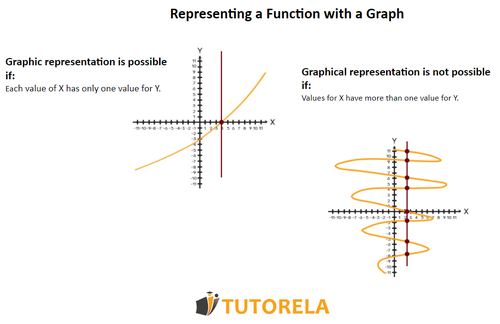As we learned in an article on functions, the standard "correspondence rule" is a connection between a dependent variable and an independent variable .
By means of a graph or drawing, which gives a visual aspect to the concept of the function. From the graph it is possible to understand whether it is a linear function (straight line), a quadratic function (parabola) and more.
Remember that when it comes to a graphical representation of a function, each point in the domain will always have only one point within the range . Therefore, not every drawing is a graphical representation of a function. Here is an example.
